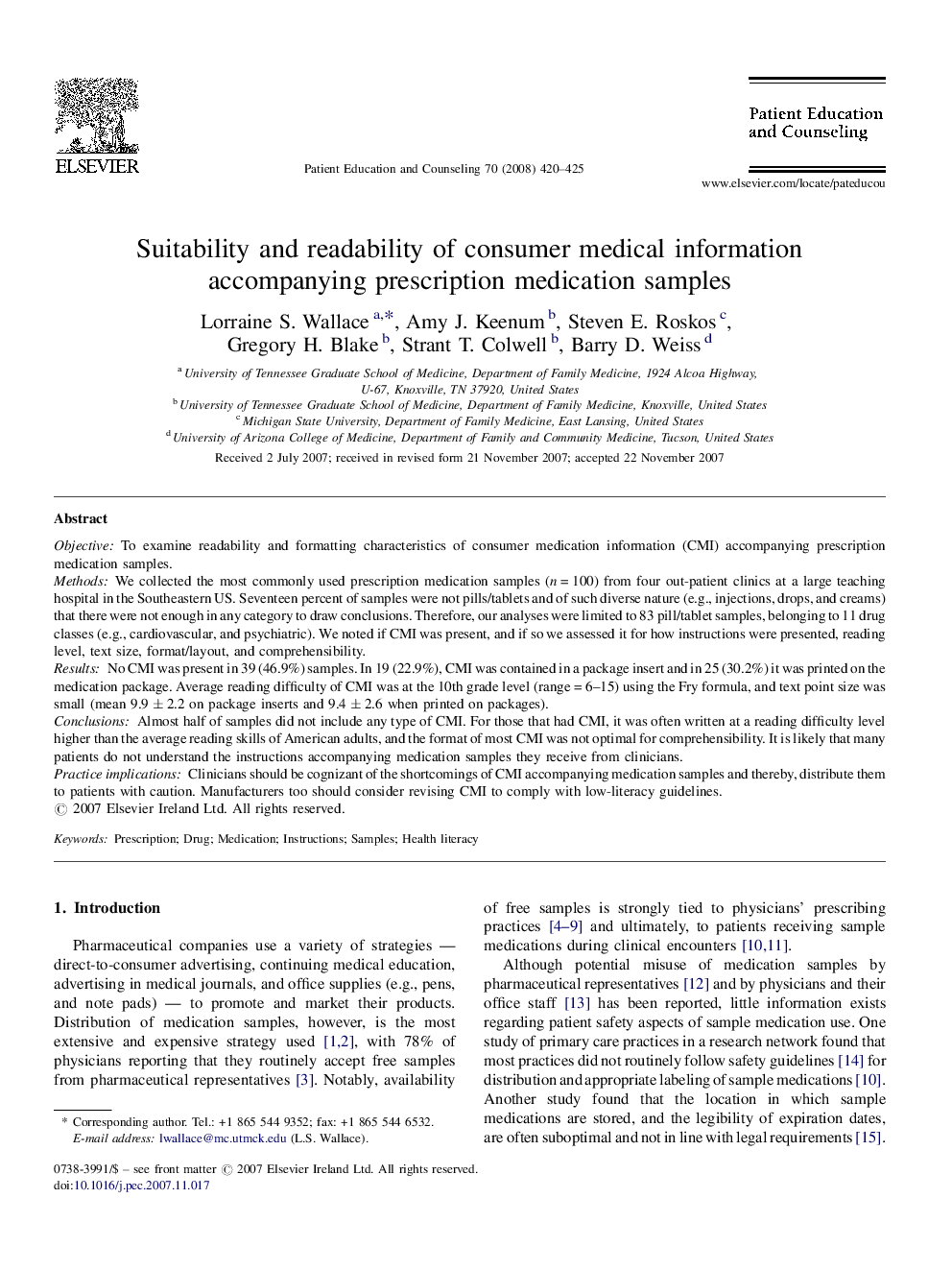| Article ID | Journal | Published Year | Pages | File Type |
|---|---|---|---|---|
| 3814293 | Patient Education and Counseling | 2008 | 6 Pages |
ObjectiveTo examine readability and formatting characteristics of consumer medication information (CMI) accompanying prescription medication samples.MethodsWe collected the most commonly used prescription medication samples (n = 100) from four out-patient clinics at a large teaching hospital in the Southeastern US. Seventeen percent of samples were not pills/tablets and of such diverse nature (e.g., injections, drops, and creams) that there were not enough in any category to draw conclusions. Therefore, our analyses were limited to 83 pill/tablet samples, belonging to 11 drug classes (e.g., cardiovascular, and psychiatric). We noted if CMI was present, and if so we assessed it for how instructions were presented, reading level, text size, format/layout, and comprehensibility.ResultsNo CMI was present in 39 (46.9%) samples. In 19 (22.9%), CMI was contained in a package insert and in 25 (30.2%) it was printed on the medication package. Average reading difficulty of CMI was at the 10th grade level (range = 6–15) using the Fry formula, and text point size was small (mean 9.9 ± 2.2 on package inserts and 9.4 ± 2.6 when printed on packages).ConclusionsAlmost half of samples did not include any type of CMI. For those that had CMI, it was often written at a reading difficulty level higher than the average reading skills of American adults, and the format of most CMI was not optimal for comprehensibility. It is likely that many patients do not understand the instructions accompanying medication samples they receive from clinicians.Practice implicationsClinicians should be cognizant of the shortcomings of CMI accompanying medication samples and thereby, distribute them to patients with caution. Manufacturers too should consider revising CMI to comply with low-literacy guidelines.
